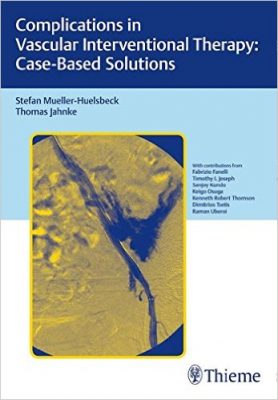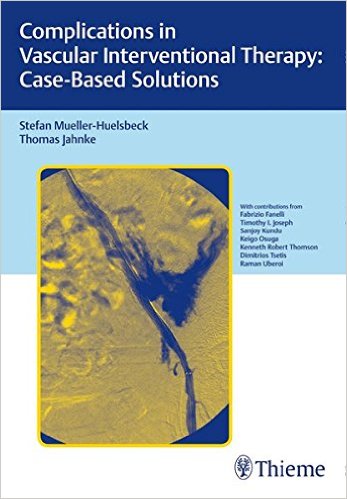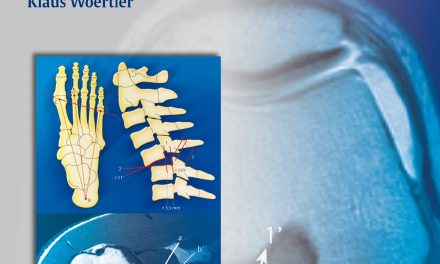 Editors: Stefan Mueller-Huelsbeck, MD and Thomas Jahnke, MD
Editors: Stefan Mueller-Huelsbeck, MD and Thomas Jahnke, MD
Publisher: Thieme – 270 pages with 540 illustrations
Book Review by: Nano Khilnani
This book has been written for angiologists, cardiologists, neuroradiologists, radiologists, vascular surgeons, and others who perform interventional vascular procedures.
When dealing with arterial, venous, or oncological diseases, vascular surgeons sometimes encounter complications. In most such cases, they are familiar with the complications and have successfully overcome them with the correct procedures. But in other situations, the complications may be unfamiliar to them, and they may be at a loss on how to deal with them.
Dr. Klaus Hausegger, who wrote the Foreword to this book, says “it is indispensable to be able to recognize a potential problem and analyze the situation meticulously.”
This book lays out the many different types of complications, and how to treat them surgically, in textual and visual format.
As you will read in the outline of the book below, this book covers a range of major and minor complications in vascular interventional therapy particularly via surgical means, complications that are particular to certain types of patients, as well as complications that you might encounter in certain types of endovascular procedures.
One of the main values of this book is the large number of images (540) alongside the text. This is extremely helpful in the learning process for vascular surgeons, especially those undergoing training wherein they have to deal with relatively small anatomic structures, compared to for example, structures in orthopedic surgery. On average, there are two images per page in this short but compact book of 270 pages.
Some pages have as many as five visuals, such as on page 242 on the topic Perforation during cutting-balloon in angioplasty of a central vein stenosis in a patient with failing dialysis fistula. This is part of the coverage in chapter 4, Case-Based Procedure-Related Complications.
Nine specialists in vascular and interventional radiology and surgery, from seven countries – Australia, Canada, Germany, Greece, Italy, Japan, and the United Kingdom – contributed content to this volume. It is organized around five sections as shown below:
- Introduction
- Minor and Major Complications
- Definitions
- Avoiding Complications
- Patient-Related Complications
- General Complications Related to Endovascular Procedures
- Management of Vascular Complications
- Case-Based Procedure-Related Complications
- Systemic Complications
- Access-Related Complications
- Lesion Treatment-Related Complications
- Rejected Cases
- Pseudo Complications
- Suggested Further Reading
- Books
- Articles
This book uses a case-based format, and the cases are real-life events that occurred in the 20 years of experience of the authors (editors and contributors) in endovascular therapy.
The authors write in their Preface: “By discussing cases where something went wrong, a physician will be able to enhance his or her skills. For adequate management of a complication it can be crucial if a similar case has been heard of before.”
The case selection in this book is not complete in terms of finding the best solution to manage a particular complication. It offers a representative group of complications covering most vascular procedures. The editors write: “The cases presented in this book seem to happen more often during daily practice.”
This is a good book on vascular interventional therapy, particularly surgical procedures.
Editors:
Stefan Mueller-Huelsbeck, MD, PhD, EBIR, FICA is Professor of Radiology, and a Board- Certified Neuroradiologist in the Department of Diagnostic and Interventional Radiology and Neuroradiology at Diakonissen Hospital Flensburg in Flensburg, Germany,
Thomas Jahnke, MD, PhD, EBIR, FICA, FSIR is Professor of Radiology in the Department of Diagnostic and Interventional Radiology and Nuclear Medicine at Friedrich-Ebert Hospital Neumuenster in Neumuenster, Germany.
Contributors:
Fabrizio Fanelli, MD
Timothy I. Joseph, MBBS
Sanjoy Kundu, MD
Keigo Osuga, MD
Kenneth Robert Thomson,MD
Dimitrios Tsetis, MD
Raman Uberoi, BMScPath







